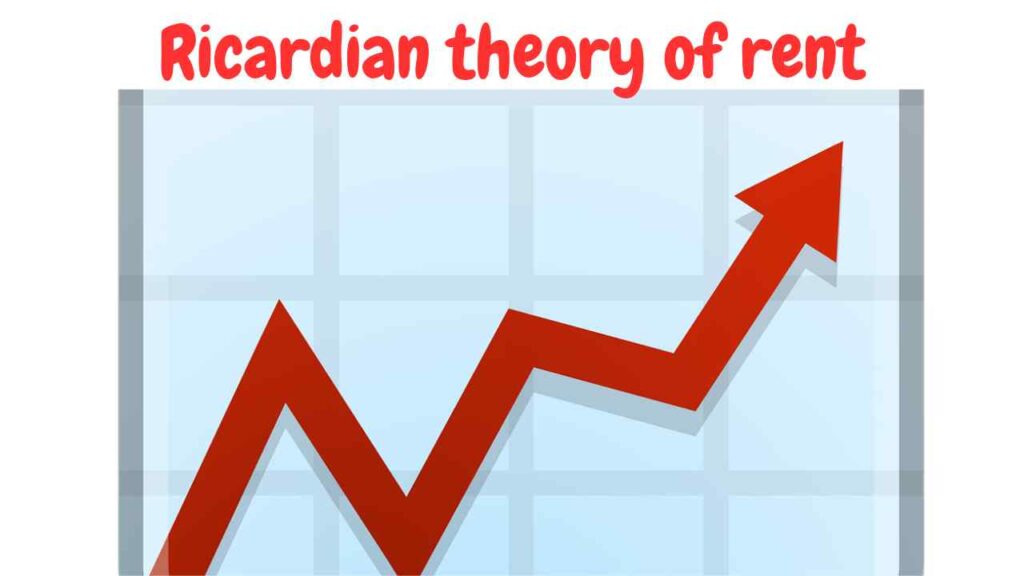
Elaborate the Recardian theory of rent in case of Extensive and Intensive Cultivation. ricardian theory of rent notes
Meaning of Rent:- In economics, which payment is made to the landlord for the purpose of using his land for production is called rent.
Definition
According to Oser, “Economic rent is the payment for the use of scarce natural resources.”
In other words:- When any payment is made due to the use of land is called rent.
THEORY OF RENT BY RICARDIAN
David Ricardo was an eminent economist. Who first of all gave a theory of rent in his book, “Principles of Political Economy and Taxation.”
According to Ricardo, “Rent is that portion of land which is paid to the landlord for the use of original powers of the soil.” ricardian theory of rent notes
Assumption
- There is a difference in the fertility of land. As some lands are more fertile, while others are less fertile.
- Supply of land is fixed. It can’t be increased or decreased.
- Land has only one use, Cultivation.
- There is a perfect market in the products of agriculture as they are sold at one price.
- There is no rent land in the economy.
- Fertility of land is original and indestructible.
- Demand for agriculture products increases with increase in population.
According to Recardian theory of rent, Rent can be determined under two situation:
EXTENSIVE CULTIVATION
INTENSIVE CULTIVATION
EXTENSIVE cultivation:- It refers to the cultivation wherein more land is used to increase production. Suppose that the entire land of a country has been divided into four grades on the basis of their fertility.
Namely A, B, C, D.
Initially when population is not much, then people will cultivate on land A which is the best land due to fertility. Supposing by employing one unit of labour and capital, costing ₹100, on this land we get 10 quintals of wheat produced. No rent will arise because ‘A’ grade land is available in abundance.
But if population goes on increasing an entire land ‘A’ grade has already been brought under cultivation. Then people will be forced to bring ‘B’ grade land under cultivation. Which is less fertile than ‘A’ grade land. So with the same cost as labour and Capital ‘B’ grade land will produce only 8 quintals wheat. So surplus of ‘A’ grade land is called Rent.
Surplus = A grade – B grade
Rent 2 = 10 quintals – 8 quintals
Thus so on if population increases they have to be forced to bring still inferior land as ‘C’ Grade. On which same unit as one labour and ₹100 capital is invested on this land. It will produce only 6 quintals of wheat. Due to which A, and B will earn rent as follows.
Surplus = A grade – C grade
Rent 4 = 10 quintals – 6 quintals
Surplus = B grade – C grade
Rent 2 = 8 quintals – 6 quintals
If the population goes on increasing and demand for wheat will also be increased. Then people are still compelled to bring even inferior land D grades. Which will produce only 4 quintals of wheat with the same inputs. This is the most inferior land. So this land will get no rent. It is called marginal land or no-rent land.
It can be understood with the following tables.
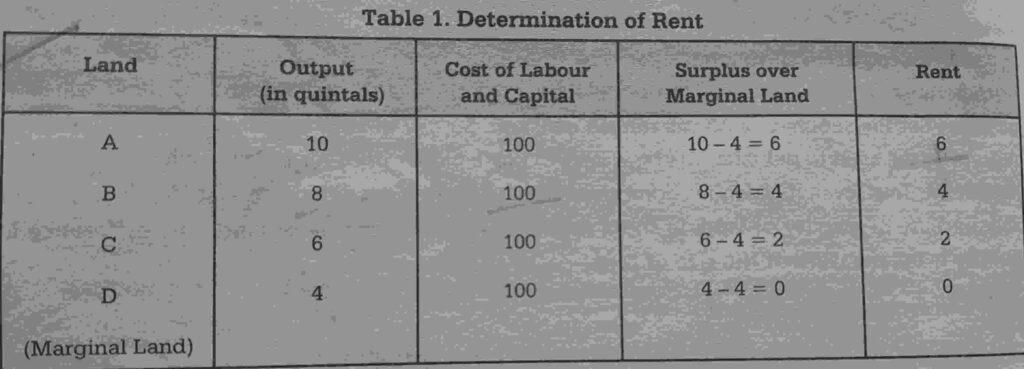
It is clear from the table that fertile land produced more than the inferior land. So which surplus is produced equal to it such land will earn rent.
As Grade A will earn rent 6 over D grade land.
B grade land will earn rent 4 over D grade land.
C grade will earn only rent 2 over D grade land.
But grade D will earn no rent as it is marginal land.
It can be understood properly with the help of the following graph.
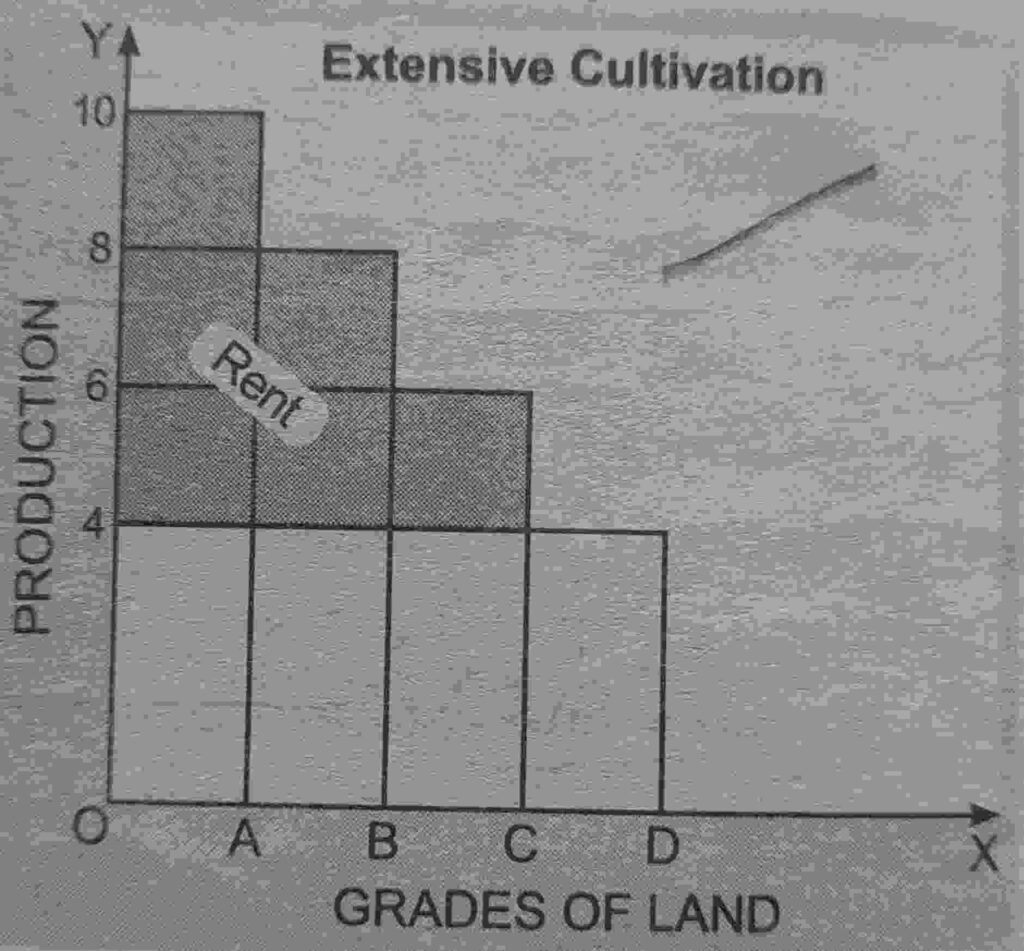
Different grades of land are shown on X-axis and output on Y-axis. Here A, B, C and D are different grades of land. Production of A Grade land is 10 quintals of wheat and B, C, D grades are 8 quintals, 6 quintals and 4 quintals of wheat respectively.
D grade land is called no rent land. The same is shown by the shaded area in this figure.

Figure (i) Shows determination of rent on A grade land. The most fertile land.

Figure (ii) Shows rent determination on B grade land.
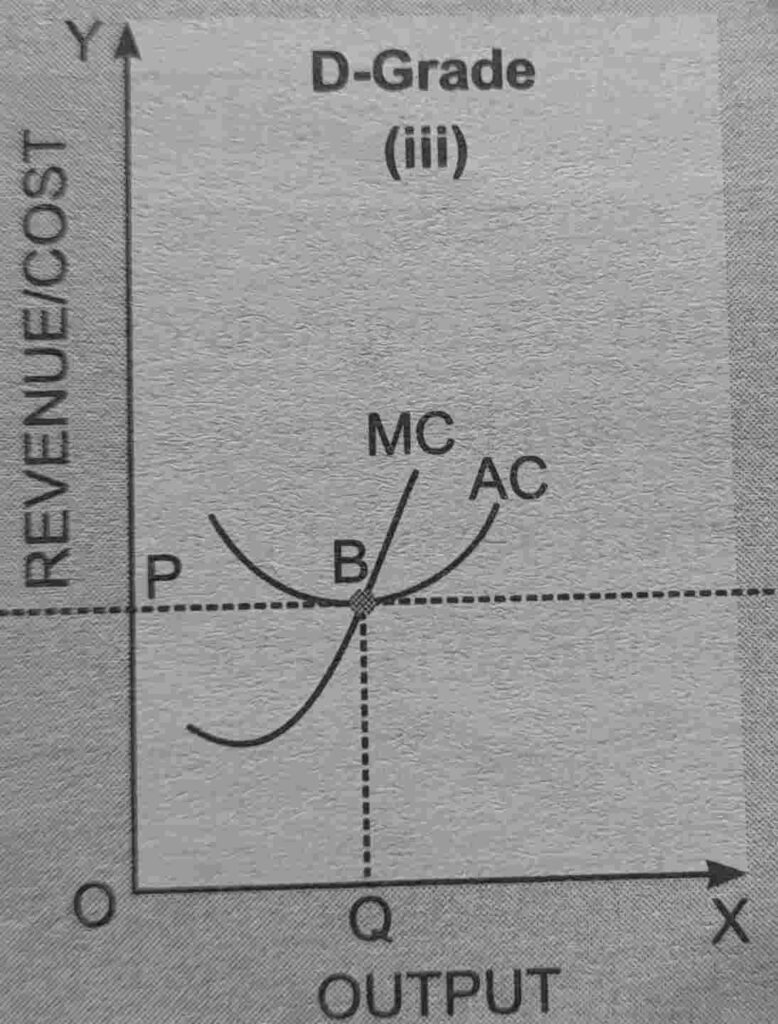
Figure (iii) Shows most inferior land as D grade. It is no rent land or marginal land.
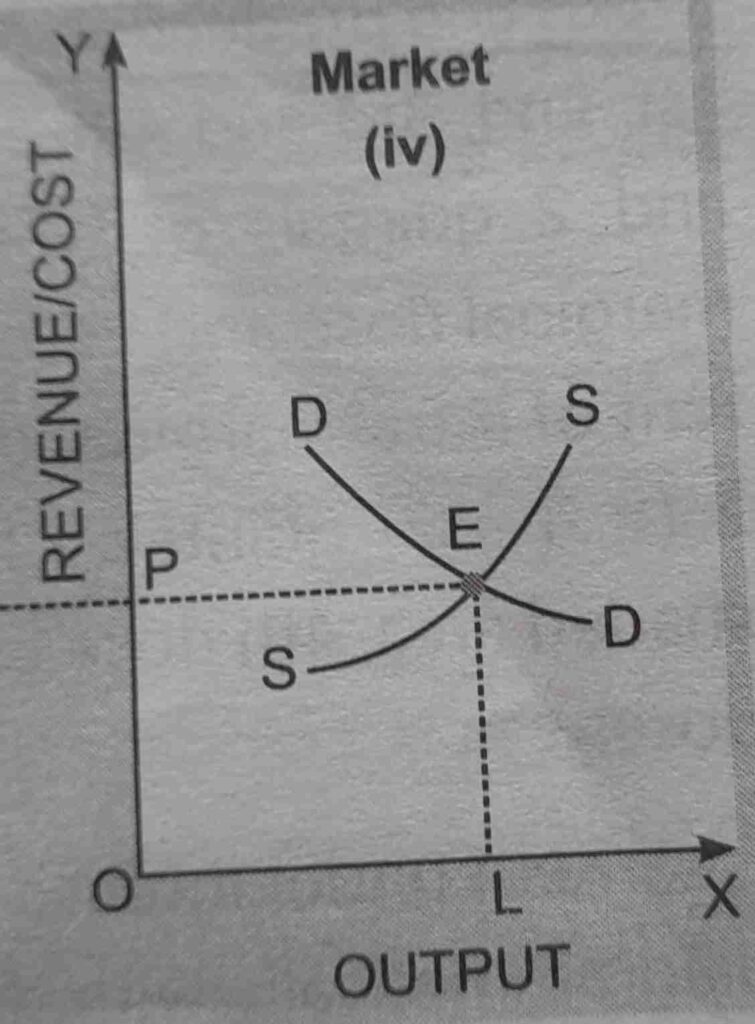
Figure (iv) Shows the total demand and supply curves of land. They intersect at point E. Thus, OP is the equilibrium price of wheat determined by market forces.
Difference between the price of wheat and its average cost of production measures economic rent.
- INTENSIVE cultivation
Under this method inputs factors of production like Labour and Capital are increased to increase production. But by this method, additional units of labour and capital lead to an increase in production at a diminishing rate, because of the operation of the Law of Diminishing Returns.
Thus, A farmer will apply more and more units of labour and capitals on his land till such a situation, when the price of the marginal output becomes equal to the marginal cost.
Further it can be clarified with the help of the following figure.
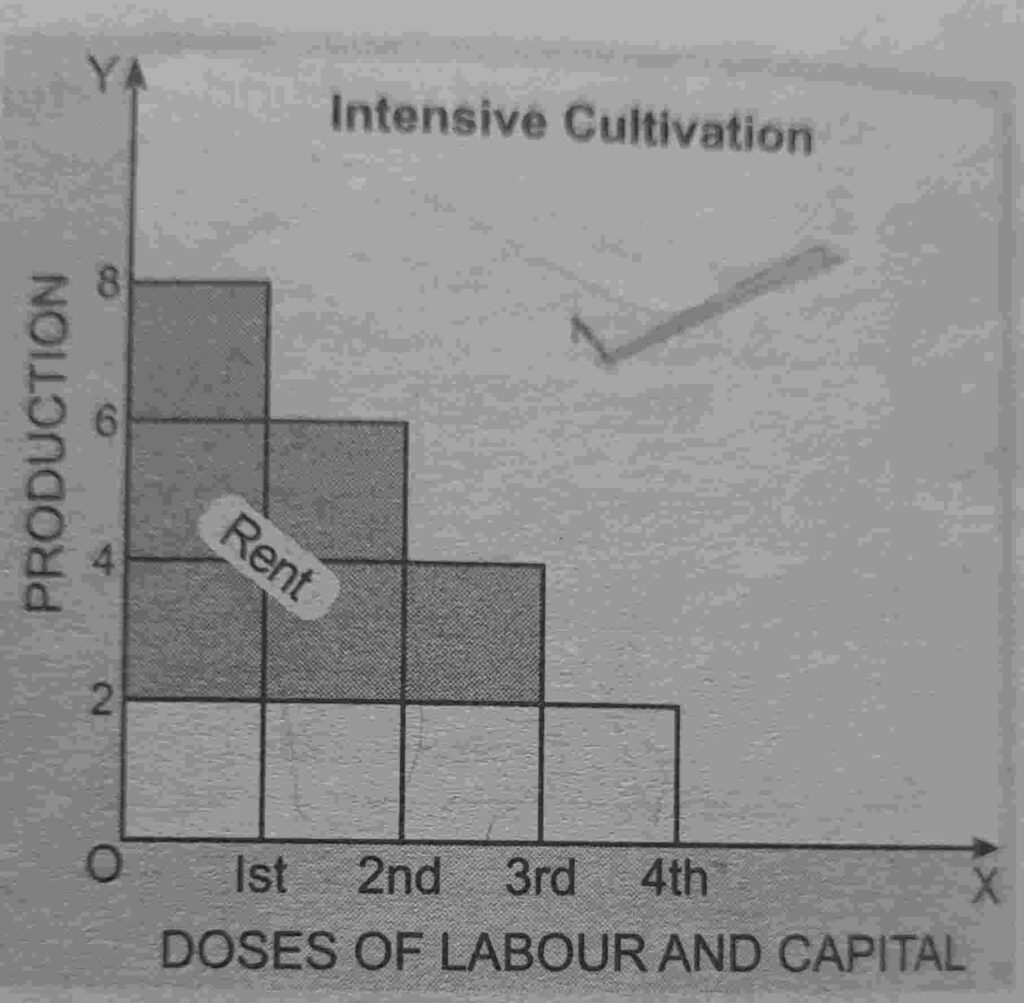
Qty of labour and capital are shown on X-axis & Production on Y-axis.
Production obtained from the 1st, 2nd, 3rd, and 4th quantity of Labour and Capital is 8, 6, 4 and 2 quintals of wheat respectively. 4th units will be no rent.
It can also be explained diagrammatically.

At point E, ARP, MRP1 and WW are equal to one another. Thus, it is the situation of equilibrium or maximum profit. In this situation OM units of Labour and Capital will be employed. No rent will arise because cost and productivity are equal. Supposedly due to rise in the price of produce of land, MRP1 shifts upward and assumes the form of MRP2. New equilibrium point will now be E1. Now more units of labour and capital than before, ON units will be employed. Total output of on units will be ORE1 N. The total cost will be OWE1 N. Thus, the cultivator will get ORE1 N – OWE1 N = WRE1 surplus. This surplus WRE1 will be called rent.
Conclusion:- Under Recardian theory rent is a payment which is paid to the landlord for using his land for which payment is made due to its fertility. Under Extensive cultivation More and more land brings under cultivation as Most fertile land to less fertile land brings under cultivation. Under Intensive cultivation on the same land production is increased by increasing more and more input factors like labour and capital with the diminishing rate of production.
Essential questions of Economics
How is the price of a commodity determined under perfect Competition? ( 2016 )
- What is meant by monopoly? Discuss the short run and long run equilibrium of firms under monopoly. ( 2016 )
If you tired on the way of study you can enjoy love laden poetry on the study way. For the purpose of refresh your mind. ricardian theory of rent notes | ricardian theory of rent notes